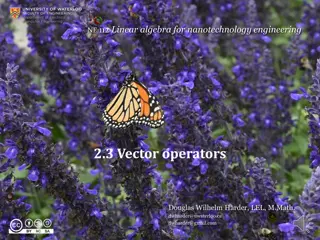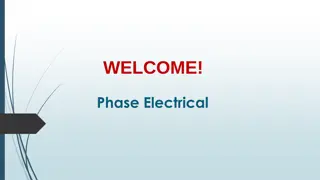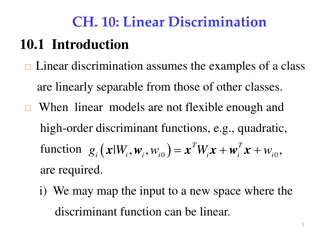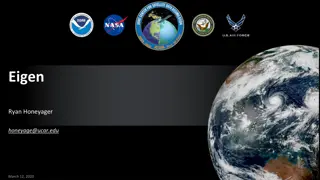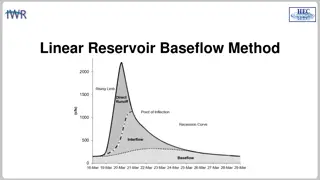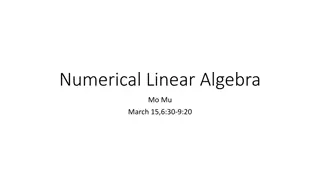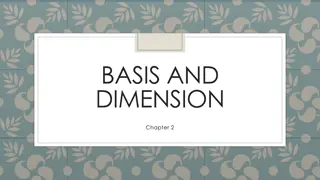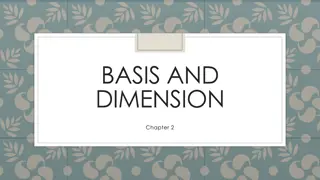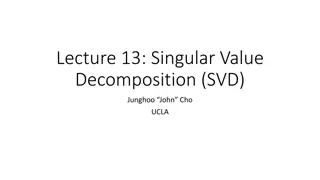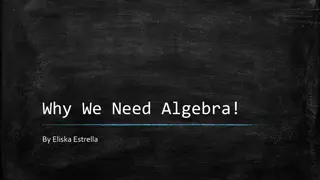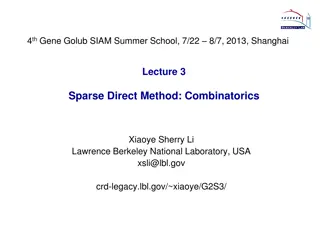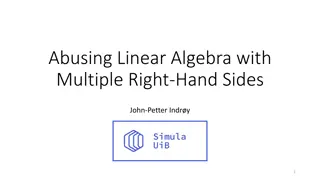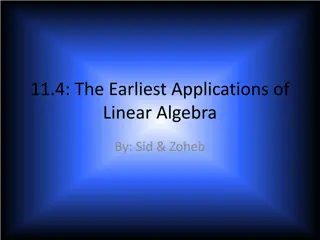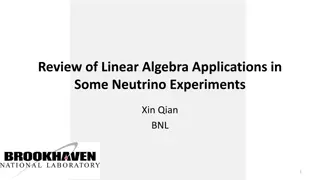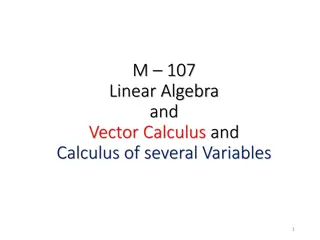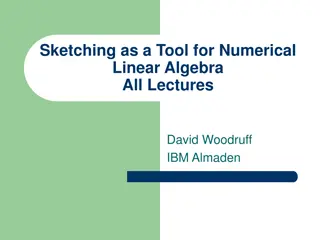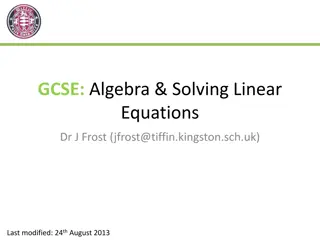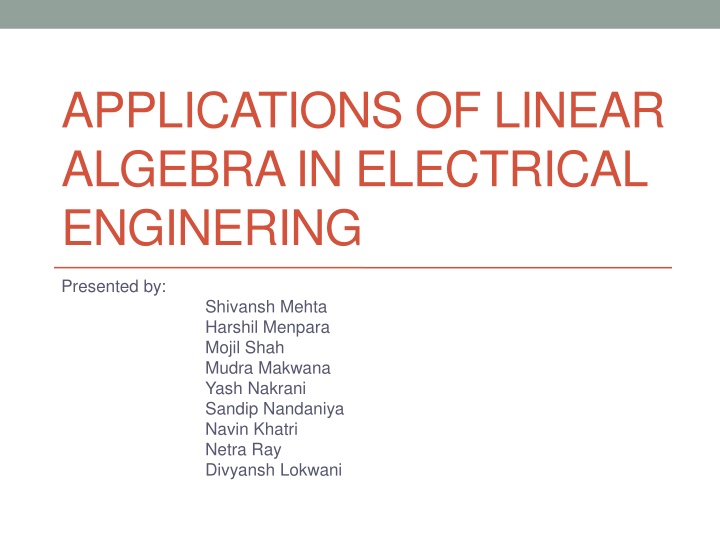
Applications of Linear Algebra in Electrical Engineering
"Explore the application of linear algebra in electrical engineering, specifically focusing on loop current analysis of electric circuits using Kirchoff's Voltage Law. Understand the role of linear algebra in solving complex electrical problems efficiently. Presented by Shivansh Mehta, Harshil Menpara, and others."
Uploaded on | 3 Views
Download Presentation

Please find below an Image/Link to download the presentation.
The content on the website is provided AS IS for your information and personal use only. It may not be sold, licensed, or shared on other websites without obtaining consent from the author. If you encounter any issues during the download, it is possible that the publisher has removed the file from their server.
You are allowed to download the files provided on this website for personal or commercial use, subject to the condition that they are used lawfully. All files are the property of their respective owners.
The content on the website is provided AS IS for your information and personal use only. It may not be sold, licensed, or shared on other websites without obtaining consent from the author.
E N D
Presentation Transcript
APPLICATIONS OF LINEAR ALGEBRA IN ELECTRICAL ENGINERING Presented by: Shivansh Mehta Harshil Menpara Mojil Shah Mudra Makwana Yash Nakrani Sandip Nandaniya Navin Khatri Netra Ray Divyansh Lokwani
WHAT IS LINEAR ALGEBRA? Linear concerning linear equations, linear functions such as and their representations through matrices and vector spaces. It is central to almost all areas of mathematics and is fundamental in modern presentations including for defining as lines, planes and rotations. Also, functional analysis may be basically viewed as the application of linear algebra to spaces of functions. Linear algebra is also used in most sciences and engineering areas, because it allows modeling many natural phenomena, and efficiently computing with such models. lagebra is the branch of mathematics of geometry, basic objects such
Loop current analysis of electric circuits In this method, we set up and solve a system of equations in which the unknowns are loop currents. The currents in the various branches of the circuit are then easily determined from the loop currents. The steps in the loop current method are: Count the number of required loop currents required. Call this number m. Choose m independent loop currents, call them I1, I2, . . . , Im and draw them on the circuit diagram.
Write down Kirchoffs Voltage Law for each loop. The result, after simplification, is a system of n linear equations in the n unknown loop currents in this form: where R11, R12, . . . , Rmm and V1, V2, . . . , Vm are constants.
Solve currents I1, I2, . . . , Im using Gaussian elimination. Reconstruct the branch currents from the loop currents. the system of equations for the m loop
EXAMPLE: Find the current flowing in each branch of this circuit.
Solution: The number of loop currents required is 3. Therefore, we choose the loop currents shown in the diagram.
Write down Kirchoffs Voltage Law for each loop. The result is the following system of equations:
Collecting terms this becomes: Solving the system of equations using Gaussian elimination gives following currents, all measured in amperes: I1 = - 4.57, I2 = 13.7 and I3 = - 1.05
Reconstructing the branch currents from the loop currents gives the results as shown.
Wheatstone Bridge To illustrate the problem, we consider a generalised bridge circuit as shown below.
Pick closed loops called mesh currents. Apply Kirchhoff Voltage Law to each loop, being very careful with the sign convention to give a set of simultaneous equations.
Solve the simultaneous equations to find the loop currents and then the current through each component and the voltage across each component. Z I = V I = Z-1V Therefore to solve the simultaneous equation we simply have to multiply the vector V by the inverse of the matrix Z.

